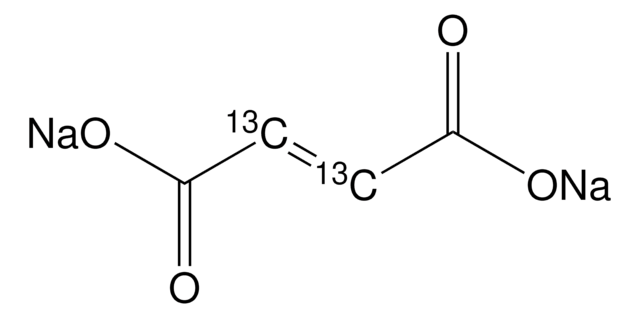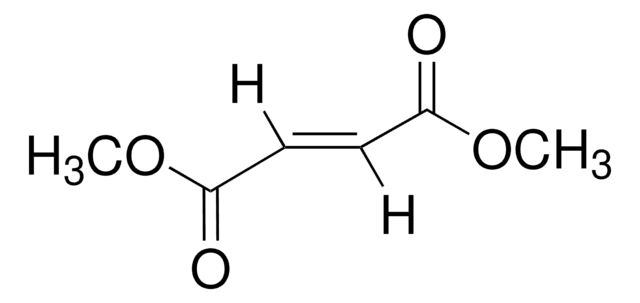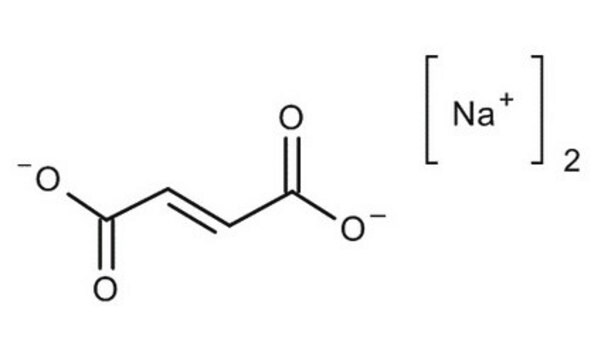F1506
Sodium fumarate dibasic
≥99%
Sinônimo(s):
Disodium fumarate, Fumaric acid disodium salt
About This Item
Produtos recomendados
Nível de qualidade
Ensaio
≥99%
cadeia de caracteres SMILES
[Na+].[Na+].[O-]C(=O)\C=C\C([O-])=O
InChI
1S/C4H4O4.2Na/c5-3(6)1-2-4(7)8;;/h1-2H,(H,5,6)(H,7,8);;/q;2*+1/p-2/b2-1+;;
chave InChI
MSJMDZAOKORVFC-SEPHDYHBSA-L
Procurando produtos similares? Visita Guia de comparação de produtos
Aplicação
- Enhancement of drug absorption: Sodium fumarate dibasic is utilized to improve the dissolution behavior and oral absorption of drugs with pH-dependent solubility, enhancing bioavailability and therapeutic efficacy in pharmaceutical applications (Salehi et al., 2021).
- Development of novel drug carriers: The compound is used in the synthesis and characterization of novel injectable drug carriers, aiming to enhance the delivery and efficacy of therapeutic agents in medical treatment strategies (Guo et al., 2005).
Código de classe de armazenamento
11 - Combustible Solids
Classe de risco de água (WGK)
WGK 3
Ponto de fulgor (°F)
Not applicable
Ponto de fulgor (°C)
Not applicable
Equipamento de proteção individual
dust mask type N95 (US), Eyeshields, Gloves
Escolha uma das versões mais recentes:
Já possui este produto?
Encontre a documentação dos produtos que você adquiriu recentemente na biblioteca de documentos.
Os clientes também visualizaram
Artigos
Learn about the four membrane-bound protein complexes that make up the electron transport chain metabolic pathway supplying energy as ATP for cellular respiration.
Information on fatty acid synthesis and metabolism in cancer cells. Learn how proliferatively active cells require fatty acids for functions such as membrane generation, protein modification, and bioenergetic requirements. These fatty acids are derived either from dietary sources or are synthesized by the cell.
Nossa equipe de cientistas tem experiência em todas as áreas de pesquisa, incluindo Life Sciences, ciência de materiais, síntese química, cromatografia, química analítica e muitas outras.
Entre em contato com a assistência técnica









